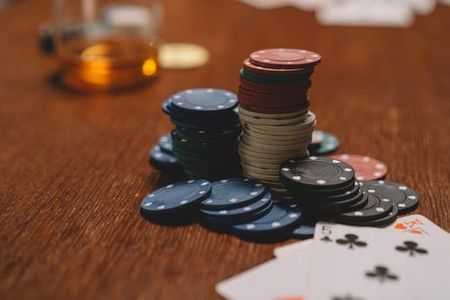Back Raise In Poker: Definition, Uses, How To Play, & Example

Table of content:
- What exactly is backraise in poker?
- Use of backraise in gameplay
- Popular example of backraise in poker
- How to use backraise in your strategy?
You often hear the expert players in poker talk about how easily they can deceive other players without putting in a lot of effort. There are multiple tricks that a player can pull on their opponents, but this article discusses poker back raise and how one can implement it in their poker strategy. It seems a bit unethical to be a proper technique, but we assure you it will rain chips in your pot if you have a knack for back raise. It confuses your opponent into assuming something false and pushes them to fold in situations where failure is on your end instead. This technique is also known as an intricate raise that happens before a flop, which further instigates the opponent into raising before you choose to re-raise again. This article entails all about poker back raise and everything you need to know about it -

GetMega is an amazing platform that lets you play Hold'em Poker with friends & family with real money. Sounds fun, isn't it? Download the GetMega Hold 'em Poker now!
What exactly is backraise in poker?
A poker back raise is a raise made by a player who has previously made a call in the previous round and is choosing to re-raise again in the current betting round. This term doesn’t denote a clear-cut intention of the player or when they want to raise their hands, and hence can be rather deceptive at times. The player usually tends to do a back raise only when the player before them chooses to raise. The most common way a player uses back raise is by squeezing in on a pre-flop situation.
Use of backraise in gameplay
- Button is raised to 3 Big Blinds
- Small blind proceeds to cold-calls
- Further, Big Blind squeezes to 12 Big Blind
- Button is folded
- Small Blind back raises to 25 Big Blind
In this specific scenario, the squeezing technique is supposed to be more effective on big blinds due to its dominating power over small ones. There is a high probability of small blind opting for a call if they held a premium pre-flop with a prior notion of wanting to back-raise against a much-expected squeezing from the big blind.
Engage with our vibrant community and experience the joy of play online poker, where the virtual tables await your presence for an entertaining gaming session.
Also Read
Popular example of backraise in poker
· In this particular situation, imagine you are dealing with pocket aces where you get two callers after an initial pre-flop raise on the table.
· Once you land on a safe flop against the rest of the players, if any of the other pre-flop callers churns out a bet, it will lead up to a call for oneself and a fold for one of the other players. Depending on the previous gameplay and the table flow, one can assume that the opponent has a King card in their hand.
· When you move your hand with a bet as the flop brings about a jack, there is a chance for the opponent to raise. However, when you re-raise in return, they might end up folding, and the pot will become all yours. This is a classic example of poker back raise.

How to use backraise in your strategy?
· Make exclusive use of this in your gameplay, as it can deceive the other players into thinking you have the exact card they assume you have. During one of the opportunities to raise, choose not to raise and wait until your opponent decides to fold.
· This technique is perfect to be played against opponents with tough and aggressive gameplay, and sometimes it can be hard to take them down. Hence, poker back raise can be implemented as a trap to slow their game and take home the pot.
Now that you know everything about backraise, how about trying the same in an actual game? Download the GetMega Poker app now and register yourself for any contests to stand a chance of winning money.
GetMega is an amazing platform that lets you play Hold'em Poker with friends & family with real money. Sounds fun, isn't it? Download the GetMega Hold 'em Poker now!
| Title | Slug |
|---|---|
| Bad Beat Jackpot in Poker | bad-beat-jackpot-in-poker |
| Preflop in Poker | preflop-in-poker |
| Poker Rake Back: Meaning, Importance, & Offers In 2022 | rake-back-in-poker |

